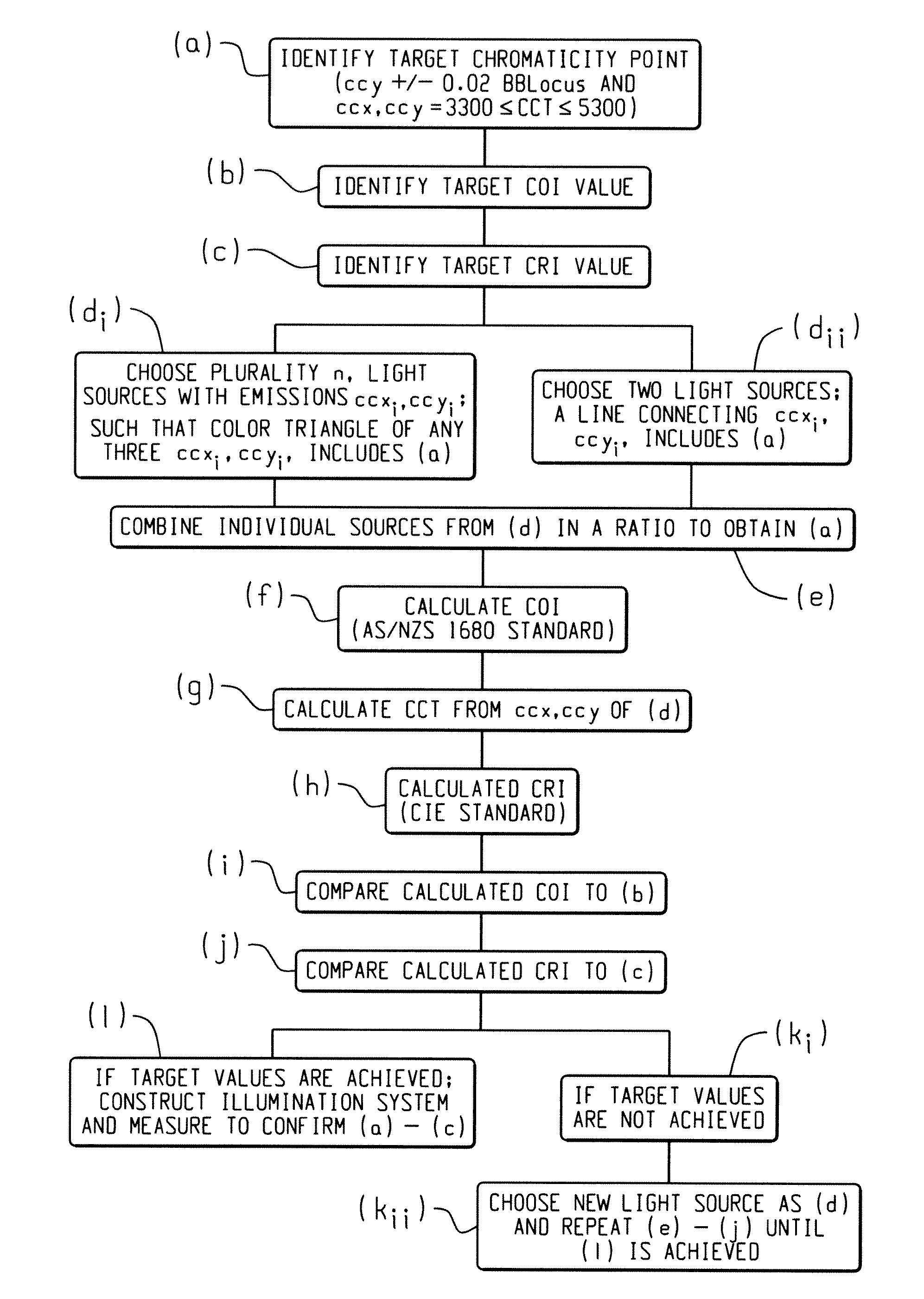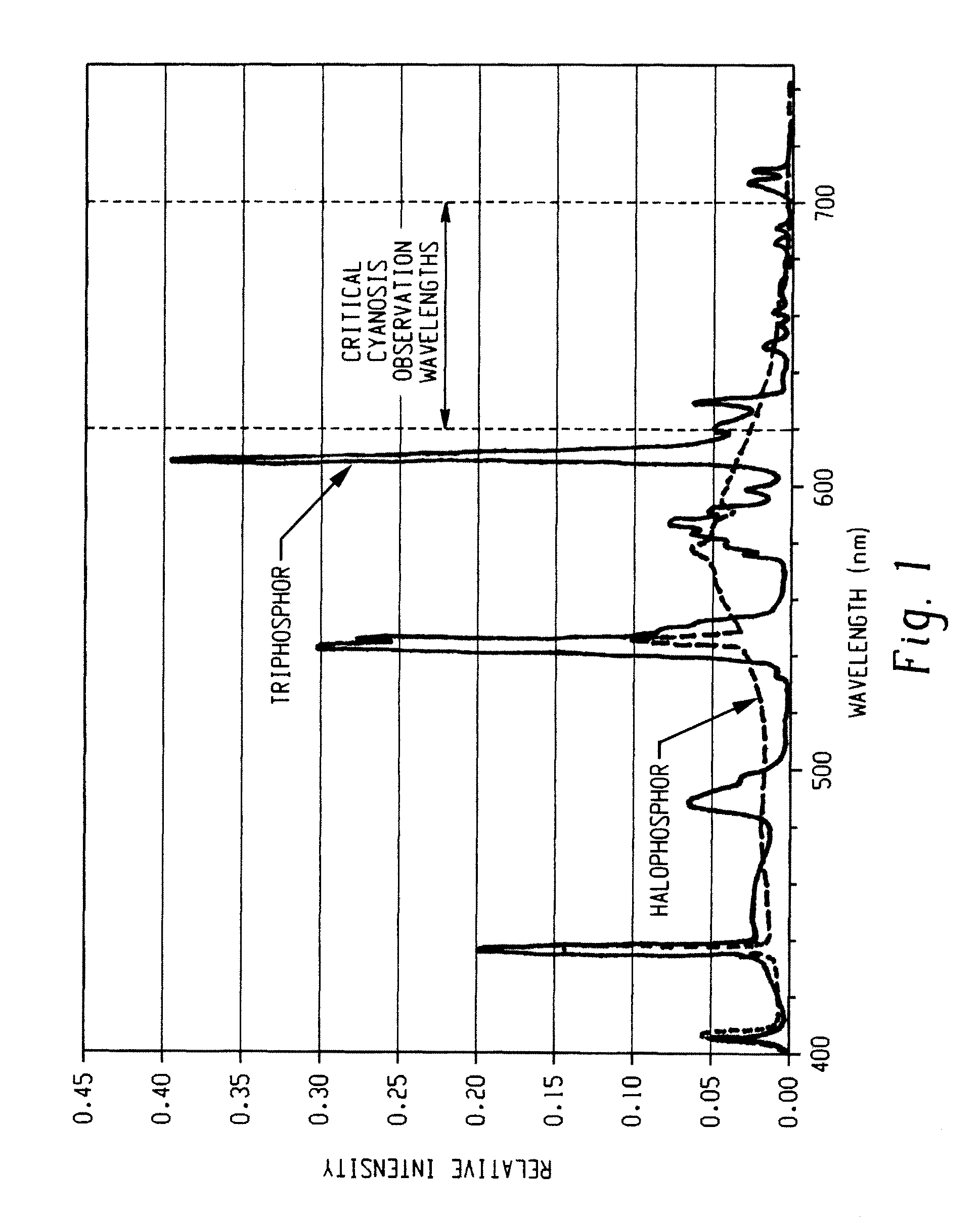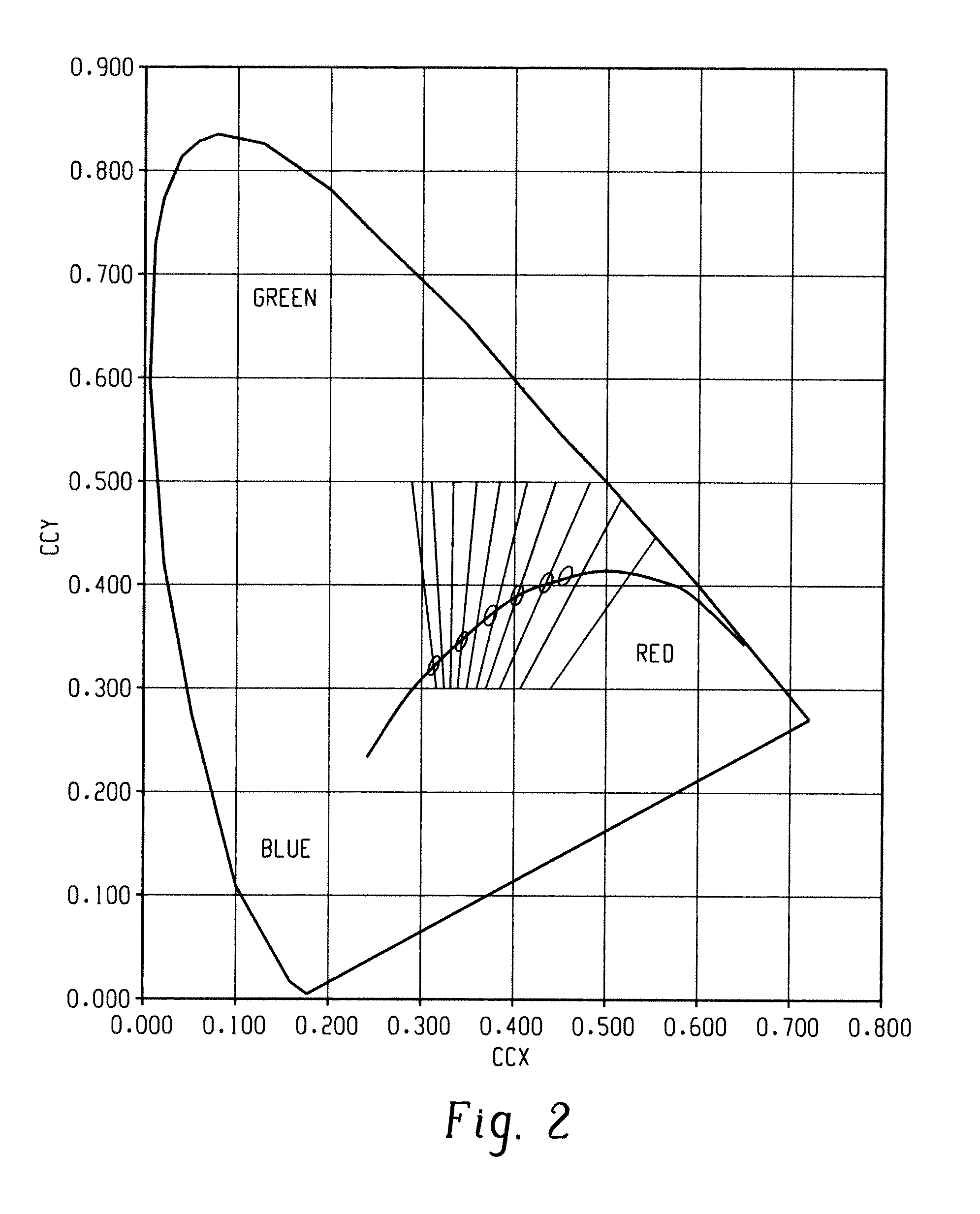Hospital lighting with solid state emitters
a technology of solid-state emitters and lighting, which is applied in the direction of semiconductor devices for light sources, lighting and heating apparatus, light source combinations, etc., can solve the problems of observable blue discoloration of lips and other mucous membranes, triphosphor lamps are not well suited for this purpose, and skin appears bluish
- Summary
- Abstract
- Description
- Claims
- Application Information
AI Technical Summary
Benefits of technology
Problems solved by technology
Method used
Image
Examples
example 1
[0049]In this Example 1, an illumination system in accord with an embodiment was created as follows: Two light sources were selected, one emitting at 496.3 nm and the other at 610.5 nm, with Full Width at Half Maximum (FWHM) of about 19 nm, i.e., the peak intensity distribution can be described by a Gaussian distribution with a maximum at the indicated peak wavelength and whose width at one-half of the maximum is about 19 nm. The light was blended to obtain a ccx, ccy in accord herewith, of 0.380, 0.380 which correlates to an ANSI standard 4100K. This selection and blending satisfied steps (a) through (e) of the process, as presented in FIG. 4. The COI was calculated to be 9.51, clearly greater than the target value of 3.3 or lower (Steps f, i). Further, CRI was calculated to be −26, which was also clearly unsatisfactory for purposes of the disclosure (Steps g, j). The FWHM of each peak was adjusted to 60 nm (Step k), following which the peak positions were adjusted to 497.8 nm and ...
example 2
[0050]A second illumination system was created, in keeping with the method set forth above in Example 1, but this time using three light sources. The light sources chosen included one emitting at 466.3 nm, another at 545.5 nm, and the third at 614.1 nm with FWHM of about 24 nm. The ratio of peak intensities was chosen to obtain ccx, ccy coordinates of 0.380, 0.380 (Steps a-e). Using these sources, the COI was calculated to be 3.3, which is the upper limit for this parameter (Step f, i). CRI was also calculated and was 86 (Step g, j). A lower COI was desired. Therefore, peak positions were then adjusted to 462.2 nm, 549.4 nm, and 617.4 nm, respectively (Step jii, k). The ratio of peak intensities was again chosen to obtain ccx,ccy of 0.380, 0.380 (Step e). The COI was then calculated to be 1.7, well below the upper limit of 3.3 (Steps f, i). CRI was calculated to be 80 (Step g, j). FIG. 6a provides the blend spectral distribution for the initial illumination system and 6b provides th...
example 3
[0051]Yet another illumination system was created, again in keeping with the process used in Example 1, however, this example includes the use of spectra of LumiLeds LEDs, available commercially from Philips LumiLeds Lighting Company. This illumination system included 4 light sources, emitting at 461 nm, 535 nm, 594 nm, and 636 nm, with FWHM of about 22, 33, 16 and 18 nm, which is typical of a commercially available product. The ratio of peak intensities was chosen to obtain ccx, ccy of 0.380, 0.380 (Steps a-e). For this system, COI was calculated to be 0.93 (Step f, i), and CRI to be 92 (Step g, j). A fifth source, emitting at 514 nm (FWHM 35 nm), was then added to the illumination system (Step k), and the ratio of peak intensities again chosen to obtain ccx, ccy of 0.380, 0.380 (Step a-e). COI was then recalculated and found to be 1.13 (Steps f, i), and the CRI recalculated to be 94 (Step g, j). At this point, the 461 nm light source was replaced with a 452 nm-emitting light sourc...
PUM
 Login to View More
Login to View More Abstract
Description
Claims
Application Information
 Login to View More
Login to View More - R&D
- Intellectual Property
- Life Sciences
- Materials
- Tech Scout
- Unparalleled Data Quality
- Higher Quality Content
- 60% Fewer Hallucinations
Browse by: Latest US Patents, China's latest patents, Technical Efficacy Thesaurus, Application Domain, Technology Topic, Popular Technical Reports.
© 2025 PatSnap. All rights reserved.Legal|Privacy policy|Modern Slavery Act Transparency Statement|Sitemap|About US| Contact US: help@patsnap.com



